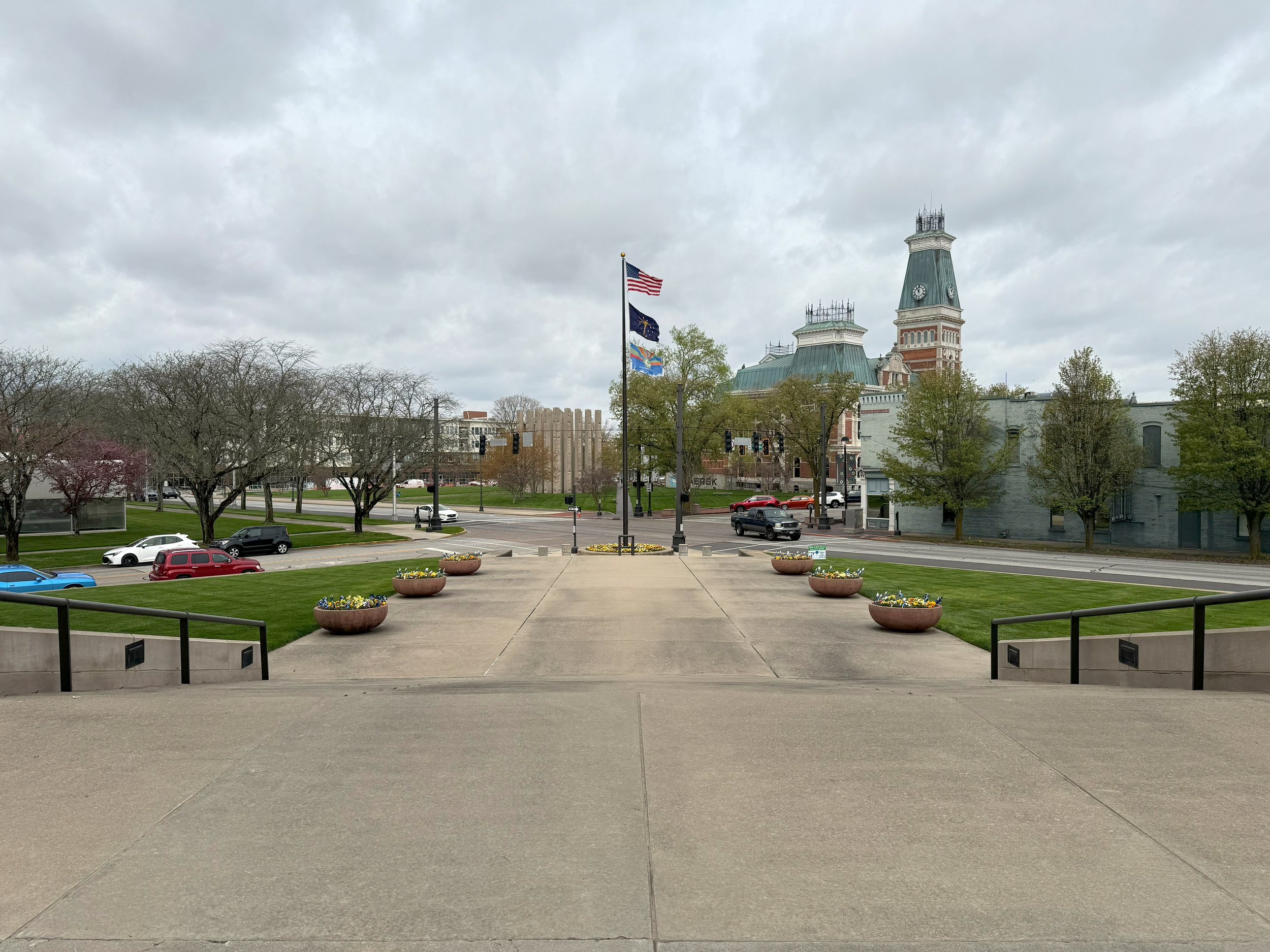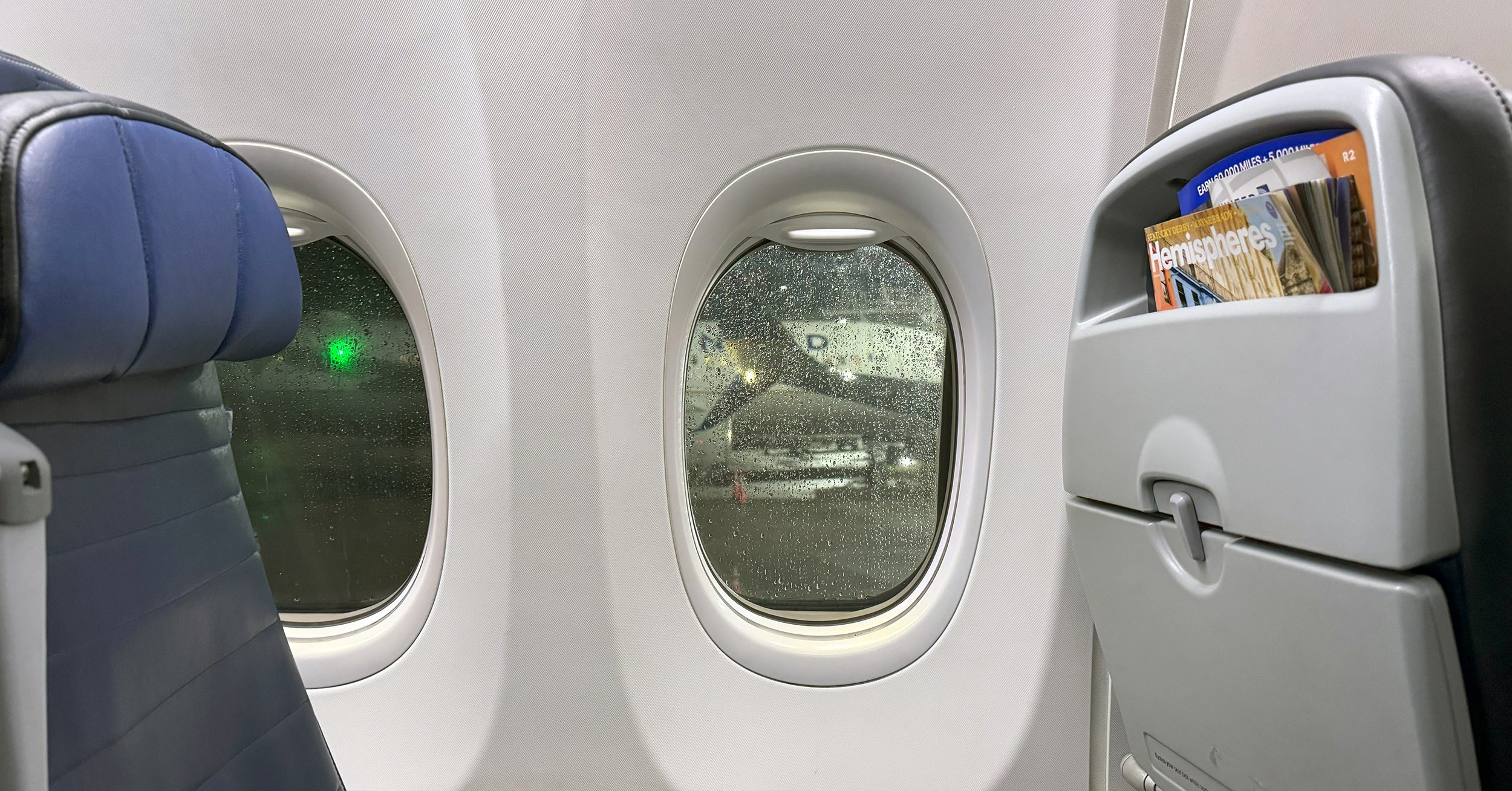
Page 4 of 4
Columbus, Indiana
Ways of leaving, ways to say goodbye, ways of seeing, seeing eye to eye
If you can remember way back to the beginning of this slideshow (three pages and almost four thousand words ago), you may recall how much the (non eclipse) randomness of this trip reminded me of work travel. The very last trip of that work travel era for that (awful) retail client was scheduled for Indianapolis, with scheduled being the most important word in the sentence. At the time I was looking forward to going to Indianapolis, not because of Indianapolis (sorry, Indianapolis), but because it would allow me to make a return trip to Columbus, Indiana. Of course that (awful) retail client ended up canceling the trip, and it took me all this time to find a reason to get back to Columbus. Although honestly, considering what’s there, I really shouldn’t have waited to return as long as I did.
Columbus, Indiana is the first big town north of John Mellencamp’s small town, and it’s famous for its strong collection of modern architecture. To prove this point, we’ll start at the corner of 5th and Lafayette, where a church designed by Eliel Saarinen is framed by a Henry Moore sculpture across the street.
The first place I visited in Columbus was that church on the corner of 5th and Lafayette, the First Christian Church, designed by Eliel Saarinen. The building was designed intentionally to look as if the congregation didn’t overspend on it, and that’s an aesthetic that could be used to define a lot of the modern architecture in Columbus. This is not where you go if you’re interested in crazy titanium clad sculptural buildings, but where you go for solid, generally understated, optimistic modernism.
Eight pictures in and we’re still on the corner of 5th and Lafayette. Across the street from that first church is the Bartholomew County Public Library, opened in 1969 and designed by I.M. Pei. This building is all about the ceiling, which, like a lot of Columbus, still looks pretty good despite being around for so long.
It’s not like the entire town is all well done modern architecture but, per capita, it’s hard to beat. Just three blocks away from 5th and Lafayette is a corner called Roche Corner, where architect Kevin Roche has almost cornered the corner. Roche designed three of the four buildings there, including these two- a post office and a corporate office. You can probably figure out which is which.
The last time I was in Columbus, I remember visiting the Commons, a building by Cesar Pelli, but now that building no longer exists. It was torn down in 2008 and replaced with a new, shinier, but not necessarily better building. Just as Michael Graves’ Humana Building in Louisville is in danger, a general danger permeates just about all of Columbus too. The reason the city is known for its modern architecture is because of one man. J. Irwin Miller owned Cummings, Inc., the town’s biggest employer and he was the town’s richest and most powerful resident. He liked modern architecture and he started a foundation that would pay for architectural fees if you chose an architect from its list, which explains all of the interesting buildings everywhere. After Miller died eight years ago, his family run company was turned public, meaning there is no longer a wealthy patron to keep things up. Currently a church designed by Eero Saarinen sits empty and closed- it needs restoration work and its congregation got so small it disbanded- and a landmark bank he designed is about to face a similar fate. What is worrying is that there are seven modern buildings in Columbus listed as National Historic Landmarks, but absolutely no local (or other) enforceable laws to keep them safe.
Meanwhile back at the Commons, the building may have been replaced but at least its original signature art piece remains. Chaos I by Jean Tinguely is a kinetic sculpture that was beloved enough by the locals that they protected it during demolition and reconstruction as they rebuilt the whole building around it. An encouraging thought, and hopefully one that foreshadows a town that can both preserve and build on its impressive legacy.
I focused this trip on downtown, walkable Columbus. There is a Columbus Visitors Center that offers guided architectural walking tours, but instead I chose to use their self guided tour app, which was informative and a bit buggy. The tour took me all around town and to all of the interesting buildings including Eero Saarinen’s Irwin Bank, SOM’s City Hall, Myron Goldsmith’s building for The Republic and my personal favorite, Paul Kennon’s AT&T Switching Center, all of which are pictured below, in that order. Not pictured are any of the historic buildings, the postmodern jail where a prisoner escaped the first week it opened (it looked pretty but they forgot to secure the windows) and most of the public art, which is impressive for a large town (or I guess small city) of this size.
On the west end of town, only five blocks from 5th and Lafayette, or three blocks from Roche Corner, is Mill Race Park. designed by Michael van Valkenburgh in 1992, although its most famous feature is a bit older. The park features a circular lake with a covered bridge that is original to 1840 but not original to Columbus, it was moved here from a much smaller town a good hour and a half away.
Mill Race Park is more than a circular lake and a stolen covered bridge, there are also some structures there by Stanley Saitowitz including this one, an observation deck that overlooks the Flatrock River and gives you an ok view back into town. It’s only an ok view since Columbus is really meant to be seen up close and not from above.
Columbus, Indiana’s most prominent resident was J. Irwin Miller (sorry Tony Stewart, Chuck Taylor and Mike Pence)- he was responsible for the city’s architecture program and he lived what he preached. His own house (the logically named Miller Residence) was designed by Eero Saarinen, with a landscape by Dan Kiley and interiors by Alexander Girard. It is tourable and it alone is probably worth a trip to Columbus.
We’ll start our tour at the front door (if you can find it), where you can also see just a taste of that terrific Dan Kiley landscape design.
All of these interior shots are taken from the same area in the house’s central room, the only place interior photos are allowed. Here you can see a really fun fireplace, a sunken seating area with (mostly) original pillows and a lot of stone walls and skylights. The house was lived in by the Millers up until they died, it was the first house ever listed on the historic register when the original owners were still living in it. They also kept the place cluttered with a lot of expensive art, including a Claude Monet Waterlilies and an outdoor Henry Moore sculpture the kids sold to Oprah Winfrey, among other things, some still left in place.
The landscape here is considered Dan Kiley’s most intact design, mostly because the Millers’ upkeep but also because Kiley’s plans to only grow perfectly straight trees that never die sometimes ends up in revisions over the years. If a tree died at the Miller House, they would pay to replace them all (in that area) so that the symmetrical effects remained in place. Now that J. Irwin Miller is no longer alive, it starts to become unrealistic to imagine the house’s current owner (the Indianapolis Museum of Art) will continue that level of upkeep. So my best recommendation is not to wait to visit the Miller House, especially if you’re going specifically to see the most intact Dan Kiley landscape you can.
With that borderline threatening recommendation, it’s time to end this slideshow. After my Miller House tour, I drove back to CVG for a painfully early flight back home the next morning in the rain, so in many ways the backyard of the Miller House is where my 2024 Eclipse trip ended. Looking ahead, the next North American Eclipse is not until 2045, and it is mostly in western Canada over Calgary and the Rockies. While I am not making any promises, it is reasonable to think I might venture out there for that one too, presumably in my flying electric self driving car complaining the whole time about how my new iPhone 36 Pro still can’t take a good eclipse photo. Something to look forward to I guess.

